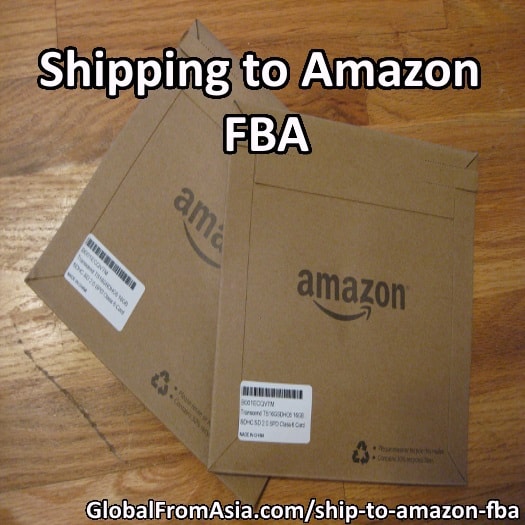
What is AMZL US?
AMZL US or Amazon Logistics US is Amazon’s own delivery network. Amazon has been the world’s biggest e-commerce player, and now that they also offer a delivery network, Amazon has gotten itself a more complete ecosystem. Usually, it’s USPS/UPS/FedEx/DHL that does the delivery for Amazon, but it seems like Amazon is about to change the game.
One reason they have ventured into a delivery network is due to customers’ complaints over late and failed deliveries. Now that they have control with overall shipping procedures without relying on third-party shippers like FedEx and USPS. Maybe they have something better in store for their millions of customers.
Over the years, Amazon has been rapidly growing, with more people choosing online shopping. More online shoppers create more demand for package delivery. Eliminating the delivery middlemen may cut their costs and give them more control over order shipments. However, I don’t think AMZL US was created to totally replace the existing third-party delivery service providers, just improve their services in order to meet customers’ satisfaction. Maybe in the future it could replace them, but that would be a huge commitment as they face millions of orders a day.
In case your order has been shipped by AMZN_US, here’s some general shipping information from Amazon including how to track your order and customer service.
FBA and AMZL

About 70% of products sold on Amazon are fulfilled by Amazon (FBA). FBA is a program wherein you send your products directly to Amazon’s fulfilment centers, at which their warehouse would handle the shipping, packing, and customer service/support for your products. Almost 50% of Amazon customers prefer to buy directly from Amazon or FBA Sellers. FBA offers customers prompt and free shipping.
With millions of products being sold on Amazon through FBA, the need for prompt and efficient delivery also rapidly increases. Hence, Amazon has to build its own logistics network to meet customers’ needs. With AMZL and FBA working together, it could possibly exceed customers’ expectations.
How to Ship to Amazon FBA

First off, Amazon has very strict regulations over inbound shipments to their warehouses. Failure to comply with FBA product preparation can get your shipment returned at your expense, or worse, you can get blocked from future shipments. To avoid that, here’s a little guide on how to ship your products to Amazon FBA.Inventory:
1. Every item should have only 1 scannable bar code to enable storage at the fulfilment center. (QR codes are not allowed.)
2. Label each item (Use only white labels with a removable adhesive)
3. Ensure that the shipment details listed in your Seller Account match the physical shipment to the fulfillment center, including:
- Merchant SKU
- FNSKU
- Condition
- Quantity shipped
- Packing option
Shipping and Routing Requirements:

- Boxes must not exceed the standard weight limit of 50 lbs., unless they contain one single oversized Unit that exceeds 50 lbs.
- For a single oversized Unit that exceeds 50 lbs., attach a label that clearly indicates “Team Lift” on the top and sides of the box.
- For a single oversized Unit that exceeds 100 lbs., attach a label that clearly indicates “Mech Lift” on the top and sides of the box.
- Boxes containing jewelry or watches must not exceed 40 lbs.
- Boxes containing multiple standard-size units must not exceed 25″ on any side. A box may exceed the 25″ limit if it contains oversize units that measure longer than 25″. Boxes that are excessively large relative to the oversize units may be subject to restriction of inbounding privileges, additional fees, or refusal at a fulfillment center.
(Source)
Amazon’s quick reference guide (this is a downloadable link) on packing and shipping inventory to Amazon is a 33-page pdf file. Honestly, it isn’t “quick” at all. If you don’t have the time to read this guide, there are actually numerous 3PLs (third-party logistics) that can assist you by ensuring compliance with Amazon’s inbound shipments.
How Does Amazon Shipping Work?
Most Amazon’s customers are already used to Amazon’s third-party shipping service providers, such as FedEx, USPS, DHL and UPS.
In order to meet the higher demand for package delivery, Amazon uses multiple carriers to deliver items worldwide.
Amazon has even partnered with some delivery providers to deliver orders in chosen areas such as:
1. Delivery Company – fully-licensed and insured company with documented driver safety policies, procedures, training, and professional cargo vehicles.
2. Amazon Flex: Delivery done by individuals who are capable of delivering packages for Amazon using their own car and their smartphone.
3. Middle Mile Providers: Fleet owners with a DOT# and MC# who want to provide power only to haul loads for Amazon.
4. Amazon Drone Delivery / Prime Air: This is probably the coolest shipping method the world has ever known. It’s a delivery system designed to deliver items to Amazon’s customers within 30 minutes using drones. To use this service, a customer must be located within several miles of an Amazon fulfilment center, and the order has to be not more than 5 lbs.
Prime Air still has numerous hurdles and things to fix, and it seems like it would still take a few years to get this program fully launched.

One Comment on “Shipping to Amazon FBA”
Hi,
I am an Amazon seller and my company is in Singapore. I am planning to launch my products in Amazon US in June 2019. Appreciate your response on my inquiry on your services.